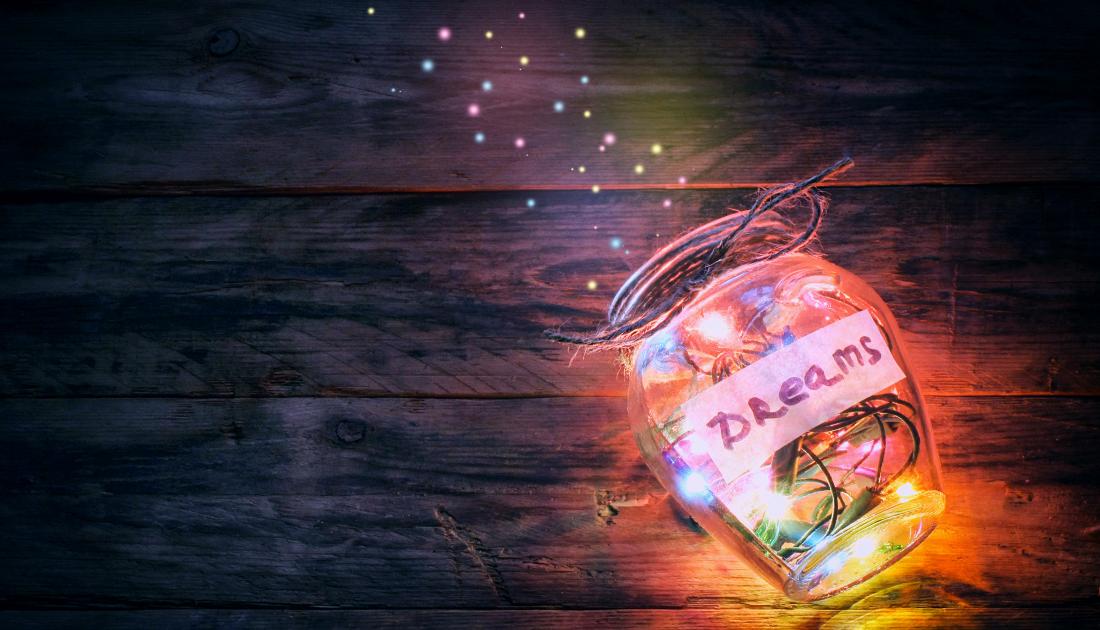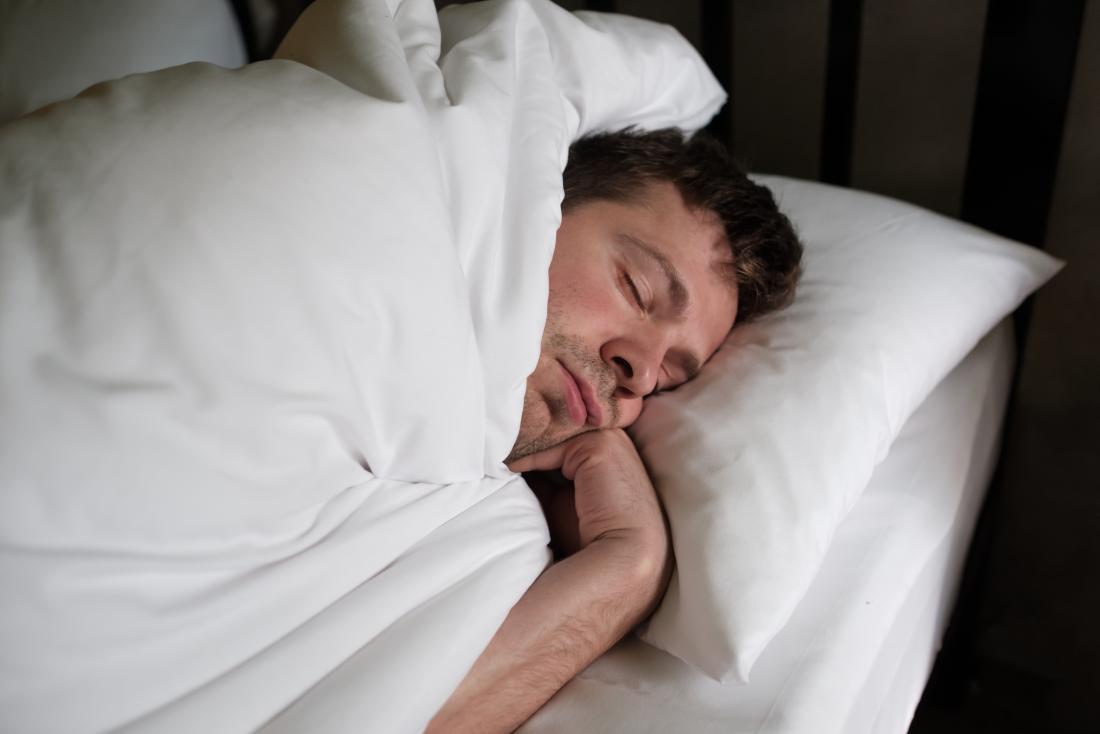What if You Dream About Killing Your Unborn Baby
We include products we think are useful for our readers. If you buy through links on this page, we may earn a minor commission. Here's our process.
Dreams are stories and images that our minds create while nosotros sleep. They tin can be entertaining, fun, romantic, disturbing, frightening, and sometimes bizarre.
They are an enduring source of mystery for scientists and psychological doctors. Why exercise dreams occur? What causes them? Can we control them? What do they hateful?
This article will explore the current theories, causes, and applications of dreaming.

Dreams: Do they represent our unconsious desires?
There are several theories about why we dream. Are dreams only part of the sleep cycle, or do they serve another purpose?
Possible explanations include:
- representing unconscious desires and wishes
- interpreting random signals from the brain and torso during slumber
- consolidating and processing data gathered during the solar day
- working as a grade of psychotherapy
From evidence and new research methodologies, researchers take speculated that dreaming serves the following functions:
- offline memory reprocessing, in which the encephalon consolidates learning and retentiveness tasks and
supports and records waking consciousness - preparing for
possible future threats - cognitive simulation of real life experiences, as dreaming is a subsystem of the waking default network, the part of the heed active during daydreaming
- helping
develop cognitive capabilities - reflecting
unconscious mental function in a psychoanalytic fashion - a unique state of consciousness that
incorporates experience of the nowadays, processing of the past, and preparation for the futurity - a psychological space where overwhelming, contradictory, or highly complex notions can be
brought together by the dreaming ego, notions that would be unsettling while awake, serving the need for psychological rest and equilibrium
Much that remains unknown nigh dreams. They are past nature hard to study in a laboratory, but engineering and new research techniques may help improve our agreement of dreams.
Phases of sleep

Dreams near likely happen during REM sleep.
There are five phases of sleep in a sleep bike:
Stage i: Lite sleep, deadening center movement, and reduced muscle action. This stage forms 4 to v per centum of total sleep.
Stage ii: Centre movement stops and brain waves go slower, with occasional bursts of rapid waves called sleep spindles. This phase forms 45 to 55 percent of total sleep.
Stage 3: Extremely slow brain waves chosen delta waves begin to appear, interspersed with smaller, faster waves. This accounts for 4 to half-dozen percent of total sleep.
Phase iv: The brain produces delta waves almost exclusively. Information technology is hard to wake someone during stages iii and 4, which together are called "deep sleep." There is no eye movement or musculus activity. People awakened while in deep slumber do not adjust immediately and oftentimes feel disoriented for several minutes after waking up. This forms 12 to 15 percent of total sleep.
Phase 5: This stage is known as rapid eye motility (REM). Breathing becomes more than rapid, irregular, and shallow, optics jerk apace in diverse directions, and limb muscles become temporarily paralyzed. Centre rate increases, blood pressure rises, and males develop penile erections. When people awaken during REM sleep, they often describe bizarre and illogical tales. These are dreams. This stage accounts for 20 to 25 pct of total sleep fourth dimension.
Neuroscience offers explanations
Dreams are a universal human experience that can be described as a state of consciousness characterized by sensory, cognitive and emotional occurrences during sleep.
The dreamer
There is
There are significant differences between the neuroscientific and psychoanalytic approaches to dream assay.
Neuroscientists are
Reports of dreams
These elements create a novel "reality" out of seemingly nothing,
Nightmares
Nightmares are distressing dreams that crusade the dreamer to feel a number of agonizing emotions. Mutual reactions to a nightmare include fear and anxiety.
They can occur in both adults and children, and causes include:
- stress
- fright
- trauma
- emotional difficulties
- affliction
- use of sure medications or drugs
Lucid dreams
Lucid dreaming is the dreamer is aware that they are dreaming. They may take some control over their dream.
This measure of control tin can vary between lucid dreams. They ofttimes occur in the eye of a regular dream when the sleeping person realizes suddenly that they are dreaming.
Some people experience lucid dreaming at random, while others accept reported being able to increase their capacity to control their dreams.
What goes through our minds just before we fall asleep could touch on the content of our dreams.
For example, during exam time, students may dream nigh form content. People in a relationship may dream of their partner. Spider web developers may see programming code.
These coexisting observations propose that elements from the everyday re-emerge in dream-similar imagery during the transition from wakefulness to slumber.
Characters
Studies have examined the "characters" that appear in dream reports and how they the dreamer identifies them.
A report of
- Forty-eight percent of characters represented a named person known to the dreamer.
- Thirty-five percent of characters were identified by their social role (for example, policeman) or relationship to dreamer (such every bit a friend).
- 16 percent were not recognized
Among named characters:
- 30-two percent were identified by appearance
- Twenty-one per centum were identified by beliefs
- 40-v percent were identified by confront
- 40-four percentage were identified by "just knowing"
Elements of bizarreness were reported in fourteen per centum of named and generic characters.
Some other study investigated the relationship between dream emotion and dream grapheme identification.
Affection and joy were commonly associated with known characters and were used to identify them even when these emotional attributes were inconsistent with those of the waking state.
The findings suggest that the dorsolateral prefrontal cortex, associated with short-term retentiveness, is less active in the dreaming encephalon than during waking life, while the paleocortical and subcortical limbic areas are more than active.
Memories
The concept of 'repression' dates back to Freud. Freud maintained that undesirable memories could become suppressed in the listen. Dreams ease repression by assuasive these memories to be reinstated.
A report showed that slumber
2 types of temporal furnishings characterize the incorporation of memories into dreams:
- the day-residue effect, involving immediate incorporations of events from the preceding day
- the dream-lag effect, involving incorporations delayed by about a week
The
- processing memories into dream incorporation takes a wheel of effectually 7 days
- these processes help further the functions of socio-emotional adaptation and memory consolidation
Dream lag
Dream-lag is when the images, experiences, or people that emerge in dreams are images, experiences, or people you have seen recently, perchance the previous twenty-four hour period or a week earlier.
The idea is that certain types of experiences take a calendar week to become encoded into long-term retentiveness, and some of the images from the consolidation process will announced in a dream.
Events experienced while awake are said to characteristic in 1 to two percent of dream reports, although 65 percent of dream reports reverberate aspects of recent waking life experiences.
The dream-lag effect
Retention types and dreaming
2 types of retentiveness tin can form the ground of a dream.
These are:
- autobiographical memories, or long-lasting memories about the self
- episodic memories, which are memories virtually specific episodes or events
A report exploring unlike types of memory within dream content among 32 participants
- One dream (0.5 percent) contained an episodic retentiveness.
- Nigh dreams in the study (80 percent) contained low to moderate incorporations of autobiographical memory features.
Researchers suggest that memories of personal experiences are experienced fragmentarily and selectively during dreaming. The purpose may be to integrate these memories into the long-lasting autobiographical memory.
A hypothesis stating that dreams reflect waking-life experiences is supported by studies investigating the dreams of psychiatric patients and patients with sleep disorders. In short, their daytime symptoms and bug
In 1900, Freud described a category of dreams known as "biographical dreams." These reverberate the historical experience of being an babe without the typical defensive part. Many authors agree that some traumatic dreams perform a office of recovery.
One paper
Themes
The themes of dreams tin can be linked to the suppression of unwanted thoughts and, as a result, an increased occurrence of that suppressed thought in dreams.
Fifteen skillful sleepers were asked to suppress an unwanted thought five minutes prior to slumber.
The
Research
For case, the positively-toned stimulus of roses in one study yielded more positively themed dreams, whereas the negative stimulus of rotten eggs was followed past more than negatively themed dreams.
Typical dreams are divers as dreams similar to those reported by a high percentage of dreamers.
Up to now, the frequencies of typical dream themes have been studied with questionnaires. These

Some themes are familiar to many people, such as flying, falling, and arriving tardily.
The 55 themes identified are:
- schoolhouse, teachers, and studying
- being chased or pursued
- sexual experiences
- falling
- arriving too tardily
- a living person being dead
- a person at present dead existence alive
- flying or soaring through the air
- failing an examination
- existence on the verge of falling
- existence frozen with fright
- being physically attacked
- being nude
- eating delicious nutrient
- swimming
- beingness locked upward
- insects or spiders
- being killed
- losing teeth
- being tied upwardly, restrained, or unable to move
- beingness inappropriately dressed
- existence a child again
- trying to complete a job successfully
- being unable to find toilet, or embarrassment about losing 1
- discovering a new room at abode
- having superior knowledge or mental ability
- losing command of a vehicle
- fire
- wild, violent beasts
- seeing a face very close to you lot
- snakes
- having magical powers
- vividly sensing, only not necessarily seeing or hearing, a presence in the room
- finding coin
- floods or tidal waves
- killing someone
- seeing yourself as dead
- being half-awake and paralyzed in bed
- people behaving in a menacing mode
- seeing yourself in a mirror
- being a member of the opposite sex
- beingness smothered, unable to breathe
- encountering God in some course
- seeing a flying object crash
- earthquakes
- seeing an angel
- part beast, part human creatures
- tornadoes or strong winds
- beingness at the movie
- seeing extra-terrestrials
- traveling to another planet
- existence an creature
- seeing a UFO
- someone having an abortion
- beingness an object
Some dream themes appear to modify over time.
For case, from 1956 to 2000, there was
What exercise they mean?
Relationships: Some take hypothesized that one cluster of typical dreams, including being an object in danger, falling, or being chased, is related to interpersonal conflicts.
Sexual concepts: Another cluster that includes flying, sexual experiences, finding money, and eating delicious nutrient is associated with libidinal and sexual motivations.
Fearfulness of embarrassment: A tertiary group, containing dreams that involve being nude, failing an exam, arriving likewise late, losing teeth, and being inappropriately dressed, is associated with social concerns and a fear of embarrassment.
Brain activeness and dream types
In neuroimaging studies of brain action during REM slumber, scientists found that the distribution of brain activeness might also exist linked to specific dream features.
Several bizarre features of normal dreams
Dreams and the senses
Dreams were evaluated in people experiencing different types of headache. Results showed people with migraine had increased frequency of dreams involving sense of taste and smell.
This
Music in dreams is rarely studied in scientific literature. Still, in a written report of 35 professional musicians and thirty non-musicians, the musicians
Musical dream frequency was related to the age of commencement of musical teaching but non to the daily load of musical activity. Nearly half of the recalled music was not-standard, suggesting that original music tin be created in dreams.
Pain
It has been shown that realistic, localized painful sensations can be experienced in dreams, either through direct incorporation or from memories of pain. Still, the frequency of pain dreams in healthy subjects is depression.
In one study, 28 not-ventilated burn down victims were interviewed for 5 consecutive mornings during their first week of hospitalization.
Results
- Xxx-9 percent of people reported hurting dreams.
- Of those experiencing pain dreams, 30 percent of their full dreams were hurting-related.
- Patients with pain dreams showed evidence of reduced sleep, more nightmares, higher intake of anxiolytic medication, and higher scores on the Bear on of Event Scale.
- Patients with hurting dreams also had a trend to report more intense pain during therapeutic procedures.
More one-half did not written report pain dreams. However, these results could suggest that pain dreams occur at a greater frequency in populations currently experiencing pain than in normal volunteers.
Self-awareness
One report
The study plant that electric current stimulation in the lower gamma band during REM slumber influences on-going encephalon action and induces self-reflective awareness in dreams.
Researchers concluded that college order consciousness is related to oscillations effectually 25 and xl Hz.
Relationships
Recent research has demonstrated parallels between styles of romantic attachment and full general dream content.
Assessment results from 61 student participants in committed dating relationships of half-dozen months duration or longer revealed
The findings illuminate our understanding of mental representations with regards to specific attachment figures.
Decease in dreams
Researchers compared the dream content of different groups of people in a psychiatric facility. Participants in one group had been admitted after attempting to have their own lives.
Their dreams of this group were compared with those of three control groups in the facility who had experienced:
- depression and thoughts about suicide
- depression without thinking about suicide
- conveying out a violent human action without suicide
Those who had considered or attempted suicide or carried out violence had were
Left and correct side of the brain
The right and left hemispheres of the brain seem to contribute in different ways to a dream formation.
Researchers of one study
A study of adolescents aged 10 to 17 years establish that those who were left-handed were more likely to feel lucid dreams and to remember dreams within other dreams.
Studies of brain activity propose that most people over the age of 10 years dream between four and six times each night, only some people rarely remember dreaming.
It is often said that 5 minutes later on a dream, people have forgotten l percent of its content, increasing to ninety percent some other 5 minutes later.
Most dreams are entirely forgotten by the time someone wakes up, but it is not known precisely why dreams are so hard to remember.
Steps that may help improve dream recall, include:
- waking upward naturally and not with an alarm
- focusing on the dream as much as possible upon waking
- writing down every bit much about the dream as possible upon waking
- making recording dreams a routine
Who remembers their dreams?
There are factors that can potentially influence who remembers their dreams, how much of the dream remains intact, and how brilliant information technology is.
Age: Over fourth dimension, a person is likely to experience changes in sleep timing, structure, and electroencephalographic (EEG) action.
Evidence
Gender: A report of dreams experienced past 108 males and 110 females found no differences between the corporeality of aggression, friendliness, sexuality, male characters, weapons, or clothes that feature in the content.
However, the dreams of females
Sleep disorders: Dream retrieve is heightened in patients with insomnia, and their dreams reverberate the stress associated with their status. The dreams of people with narcolepsy may a
Dream recollect and well-being
One written report looked at whether dream think and dream content would reflect the social relationships of the person who is dreaming.
College student volunteers
Participants who were classified every bit "high" on an "insecure attachment" scale were significantly more likely to:
- report a dream
- dream oftentimes
- feel intense images that contextualize strong emotions in their dreams
Older volunteers whose attachment manner was classed as "preoccupied" were significantly more than likely to:
- study a dream
- report dreams with a higher mean number of words
Dream recall was lowest for the "avoidant" subjects and highest for the "preoccupied" subjects.
Anybody dreams, although nosotros may not remember our dreams. At different times of life or during dissimilar experiencs, our dreams might alter.
Children'southward dreams
A report investigating anxiety dreams in 103 children aged 9 to 11 years
- Females more often had dreams containing anxiety than males, although they could non recall their dreams as frequently.
- Girls dreamt more frequently than boys nearly the loss of another person, falling, socially agonizing situations, small or aggressive animals, family members, and other female people they may or may not recognize.
Pregnancy
Studies
- Infant and child representations were less specific in women who were not meaning. Amid those who were pregnant, these images were more than probable in the late tertiary trimester than in the early on third trimester.
- During pregnancy, dreams were more likely to include the themes of pregnancy, childbirth, and fetuses.
- Childbirth content was higher in the belatedly third trimester than early on in the trimester.
- The group who were pregnant had more morbid elements in their dreams than those who were not.
Caregivers
Those that give intendance to family or people who take long-term illnesses ofttimes have dreams related to that individual.
A study following the dreams of adults that worked for at to the lowest degree a yr with individuals at United States hospice centers
- Patients tended to be clearly present in the dreams of caregivers, and the dreams were typically realistic.
- In the dream, the caregiver typically interacted with the patient in their usual chapters but was also typically frustrated by the inability to assist as fully as desired.
Bereavement
It is widely believed that oppressive dreams are frequent in people going through a time of bereavement.
A study analyzing dream quality, likewise as the linking of oppressive dreams in bereavement,
- were more frequent in the first year of bereavement
- were more than likely in those experiencing symptoms of anxiety and depression
In
- L-8 percent reported dreams of their deceased loved ones, with varying levels of frequency.
- Most participants had dreams that were either pleasant or both pleasant and agonizing, and few reported purely disturbing dreams
- Prevalent themes included pleasant past memories or experiences, the deceased being gratis of disease, memories of the deceased's affliction or time of death, the deceased in the afterlife appearing comfortable and at peace, and the deceased person communicating a message.
- Sixty percent felt that their dreams impacted upon their bereavement process.
Does anybody dream in color?

Younger people are more than likely to dream in colour.
Researchers discovered in a study that:
- Nearly 80 percent of participants younger than 30 years old dreamed in color.
- At 60 years old, 20 percent said they dreamed in color.
The number of people anile in their 20s, 30s and 40s dreaming in color increased through 1993 to 2009. Researchers speculated that color idiot box might play a office in the generational difference.
Some other study using questionnaires and dream diaries as well found older adults had more black and white dreams than the younger participants.
Older people reported that both their colour dreams and black and white dreams were equally brilliant. However, younger participants said that their black and white dreams were of poorer quality.
Can dreams predict the future?
Some dreams may seem to predict hereafter events.
Some researchers claim to have show that this is possible, but at that place is non enough show to prove it.
Most oft, this seems to be due to coincidence, a false memory, or the unconscious mind connecting together known information.
Dreams may help people learn more most their feelings, beliefs, and values. Images and symbols that appear in dreams will have meanings and connections that are specific to each person.
People looking to brand sense of their dreams should think about what each office of the dreams mean to them as an individual.
Books or guides that give specific, universal meanings to images and symbols may non be useful.
However, for those who are interested in such books, there is a option available for purchase online.
Drug withdrawal
Ane
- Almost xc percent of individuals reported drug-related dreams during the first month, mainly of using the drug.
- Almost 61 percent had drug-related dreams subsequently 6 months, mainly of using or refusing the drug.
People with complete vision loss have fewer visual dream impressions compared with sighted participants.
People who accept been unable to meet from birth
The ability to encounter does non appear to touch on emotional and thematic dream content.
Those with other abilities
Ane
Iv were built-in with paraplegia, and 10 were born unable to hear or speak.
Deafness: When compared with 36 able-bodied individuals, findings showed that effectually eighty pct of the dream reports of participants with deafness gave no indication of their damage.
Many spoke in their dreams, while others could hear and sympathize spoken language.
Paraplegia: Similarly, the dream reports of those with paraplegia showed that the participants oftentimes walked, ran, or swam in their dreams, none of which they had ever washed in their waking lives.
A second report looked at the dream reports of fifteen people who were either born with paraplegia or acquired it later in life, due to a spinal-cord injury.
Their
Other inquiry has suggested that the brain has the genetically determined ability to generate experiences that mimic life, including fully functioning limbs and senses.
People who are born without hearing or unable to motility are likely tapping into these parts of the brain equally they dream nearly tasks they cannot perform while awake.
Read the commodity in Spanish.
Source: https://www.medicalnewstoday.com/articles/284378
0 Response to "What if You Dream About Killing Your Unborn Baby"
Post a Comment